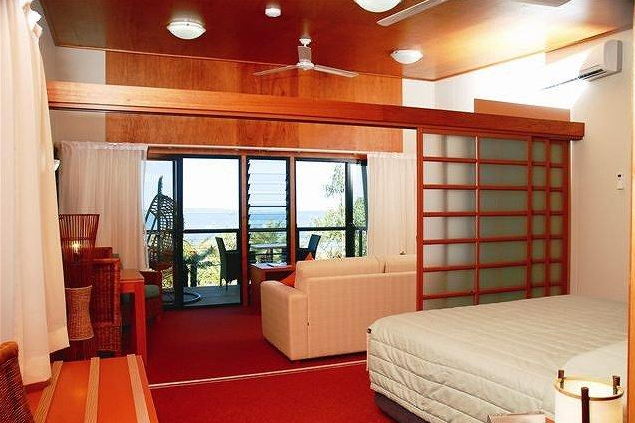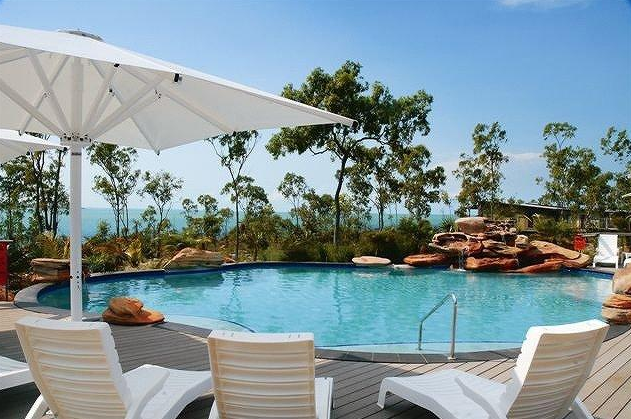GROOTE EYLANDT





Groote Eylandt - Fast Facts
November
19, 2008
Groote Eylandt (including
Angurugu, Alyangula and Umbakumba)
A major mining operation off the coast of Arnhem Land.
Groote Eylandt, which is Dutch meaning 'big island' or 'large island', is
located 630 km from Darwin by air and lies off the east coast of Arnhem Land in
the Gulf of Carpentaria.
The island is
approximately 50 km from east to west and 60 km from north to south with a
total area of approximately 2 260 sq. km. It is a low lying
island with an average height above sea level of only 15 metres. Like the
mainland areas to the west and south of the island its
vegetation is typical tropical savannah woodland with a mixture of mangroves on
the coast, paperbark, stringy-bark and pandanus.
For thousands of years the
island was inhabited by Aborigines who had made their way across the Lowrie and Warwick Channels from Arnhem Land and sparsely
settled the island living a simple hunter gatherer
existence.
Groote
Eylandt was first sighted by Europeans in 1623 when the Dutch
ship Arnhem, under the captaincy of Willem van Coolsteerdt
(not exactly a household name in the history of Australian exploration) sailed
along the west coast of the Gulf of Carpentaria. At this time
it remained unnamed and it wasn't until Abel Tasman explored the coast in 1644
that it was given the name Groote Eylandt. In 1803, while circumnavigating
Australia, Matthew Flinders travelled around the island.
Of course
the Europeans were not the island's first visitors. Fishermen
from the Indonesian archipelago had been coming to the island for thousands of
years to fish and catch beche-de-mer
(trepang). This was stopped by the
Australian government in 1907 although, even today, Indonesian fishermen
still drift into the waters of the Gulf.
There was little interest
in the island during the nineteenth century but during the twentieth century it has seen successive waves of missionaries,
military personnel and miners.
The first
mission on the island was established at Emerald River in 1921 by the Anglican
Church Missionary Society. It was moved to
Angurugu in 1943 after the RAAF took over the Emerald River airstrip as part of
Australia's northern defence. The mission continued until 1979 when the
community became a self-governing Aboriginal Town Council.
Another settlement at
Umbakumba (Port Langdon) on the northeast coast was
established in 1938 and it soon became a Qantas flying boat base.
The economy of the island
changed dramatically with the discovery of manganese near Angurugu. As early as
1803 Matthew Flinders had observed the presence of
ironstone and quartz on the island. In 1907 the South
Australian Government Geologist noted manganese outcrops but it was not until
1955 that commercial geologists took manganese samples from the island. Between
1960 and 1963 negotiations between BHP and the Church
Missionary Society (representing the local Aborigines) worked out royalty
payments and agreements which allowed large scale mining to start. In 1964 the
BHP subsidiary, Gemco (Groote Eylandt Mining Company)
was granted leases on the island and in 1966 the first
shipment of manganese ore left the island bound for a processing works at Bell
Bay near George Town in Tasmania. The manganese mined on the island is now exported to countries like Japan and the USA. The
island produces over 2 million tonnes of manganese each year. This is about 10
percent of the world's total production.
Groote Eylandt is not open
to the public. The local Aboriginal Land Council has not encouraged the
development of tourism.
If you wish to read further on the history of the island Dr Keith Cole has
written five books on the region including the excellent Groote Eylandt
Aborigines and Mining: A study in cross-cultural relationships which he
self-published in 1988.
Things to see:
ACCESS, ACCOMMODATION AND
EATING
Groote Eylandt is Aboriginal Land and, as such, permission to enter must be sought prior to arrival. Permission can be granted by either contacting the local Aboriginal
Councils directly or by writing to the Northern Land Council in Darwin.
The Groote Eylandt Mining
Company does not operate commercial accommodation, nor is any such facility
available within the township of Alyangula. There are three clubs on the island
for the mine workers.
